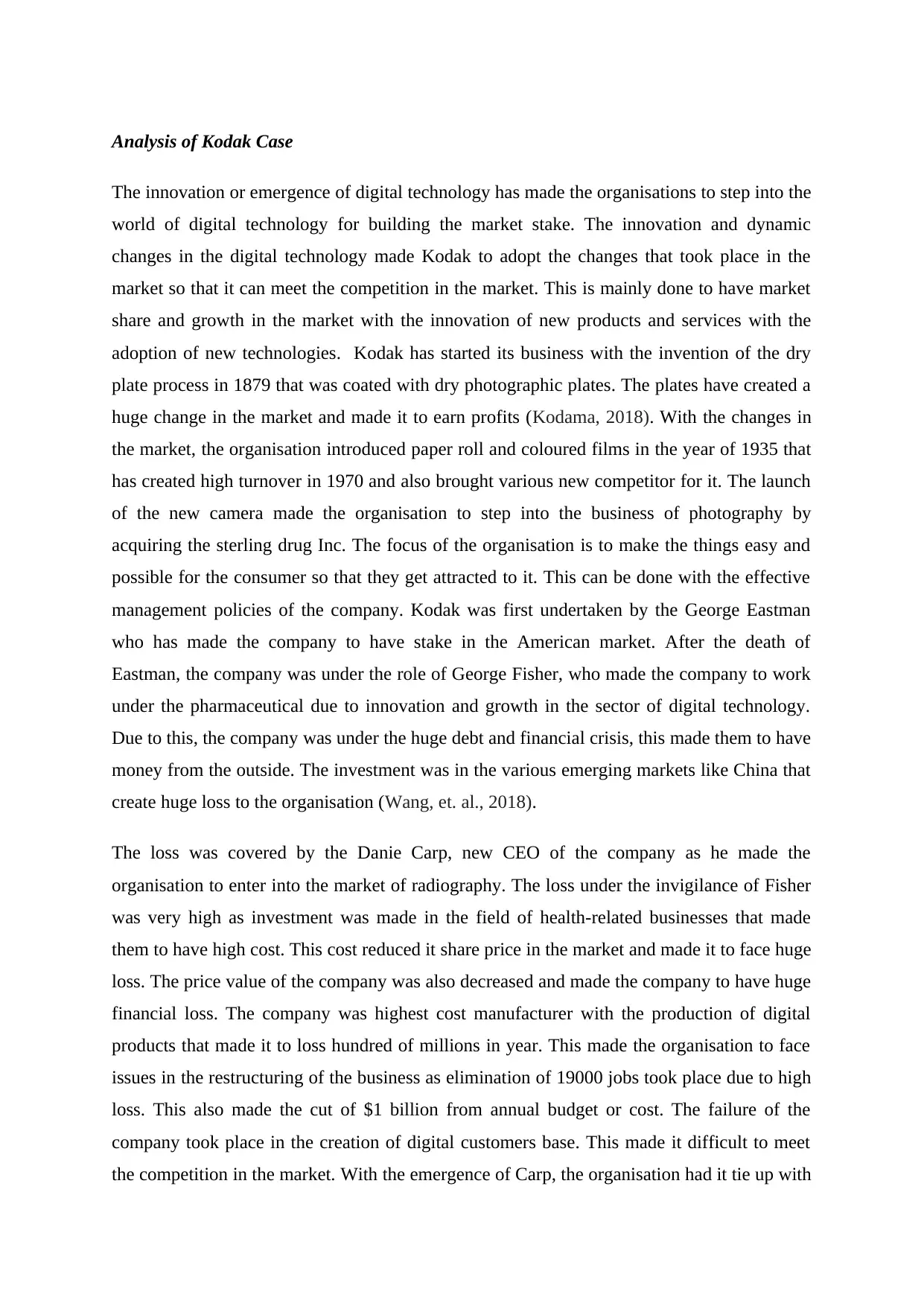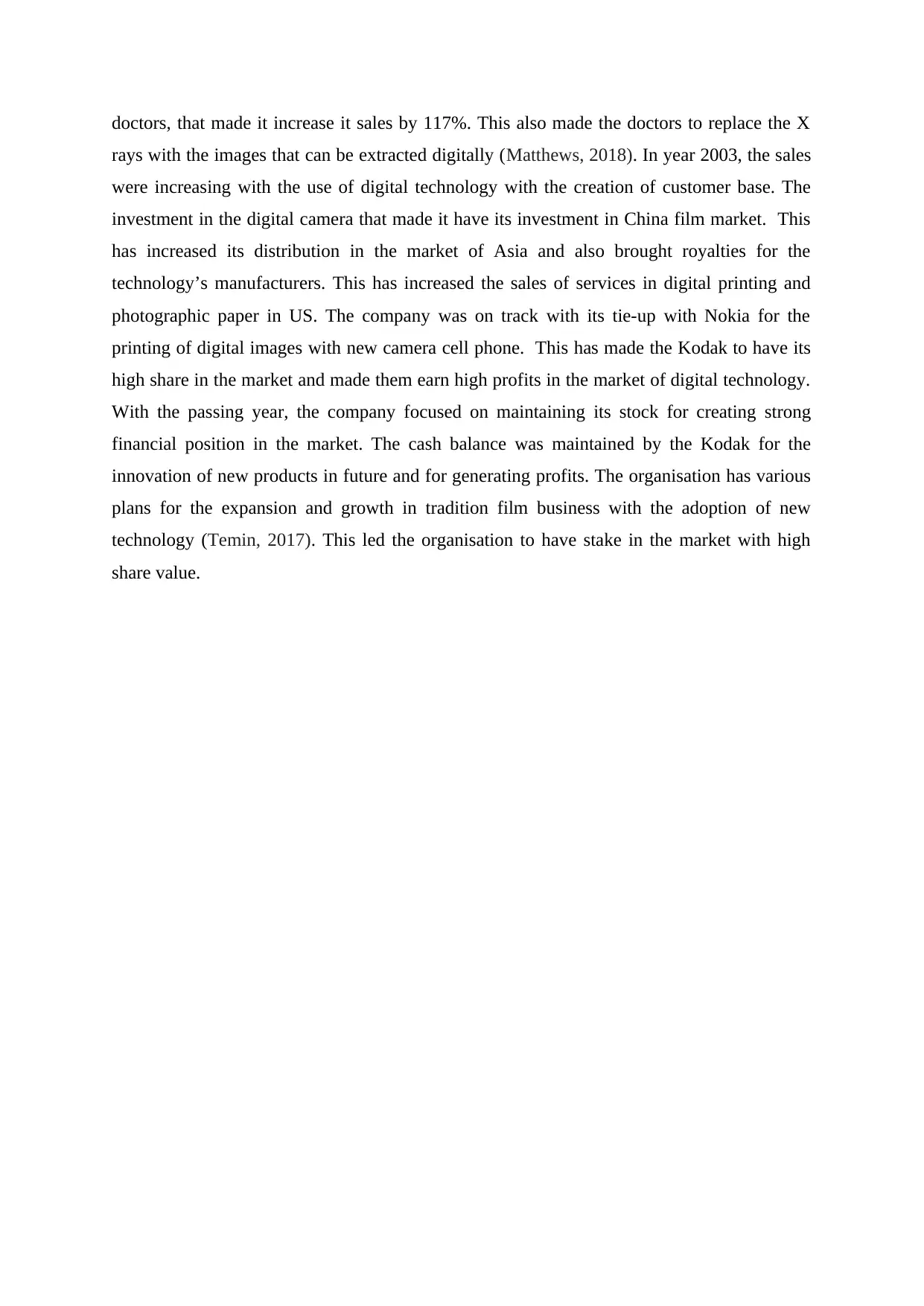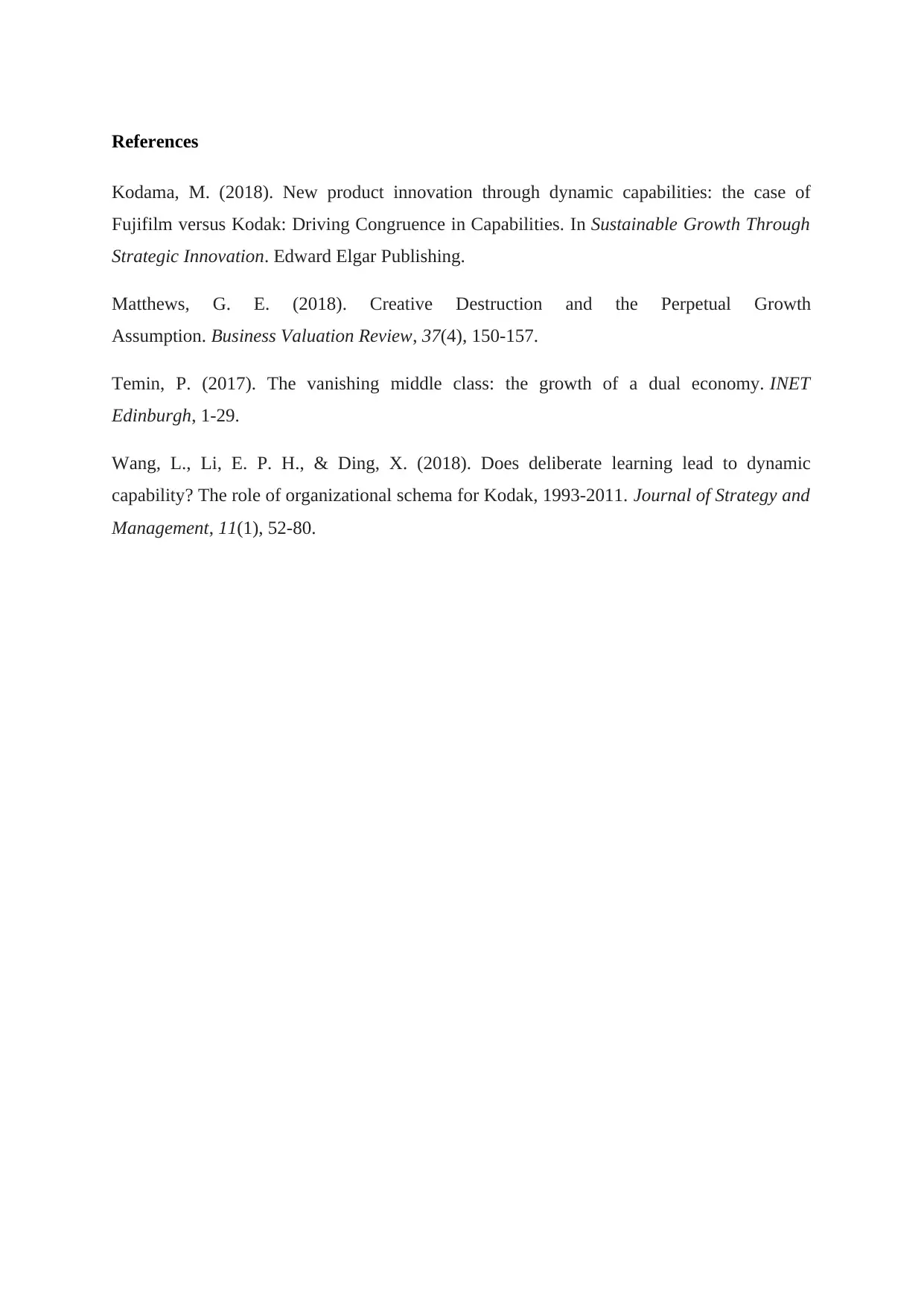Kodak Case Study: Analyzing Business Strategy, Innovation & Challenges
VerifiedAdded on 2023/04/17
|3
|807
|368
Case Study
AI Summary
This case study examines Kodak's journey from its early success with dry plate technology to its struggles in the digital age. It highlights George Eastman's initial innovations and the company's subsequent strategies, including ventures into colored films and acquisitions like Sterling Drug Inc. The analysis covers periods under different leadership, including George Fisher's focus on pharmaceuticals leading to financial crisis, and Danie Carp's efforts to redirect the company towards radiography. It discusses Kodak's failures in building a digital customer base, its investments in emerging markets like China, and its partnerships, such as with Nokia, to leverage digital printing. The study concludes by noting Kodak's efforts to maintain financial stability and explore growth opportunities in both traditional and digital sectors. Desklib provides access to this and other case studies for students.
1 out of 3









![[object Object]](/_next/static/media/star-bottom.7253800d.svg)